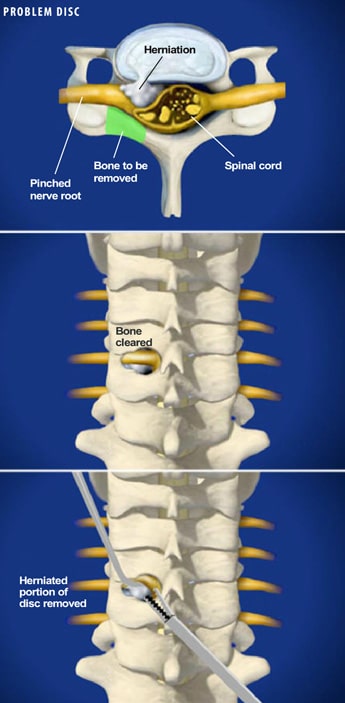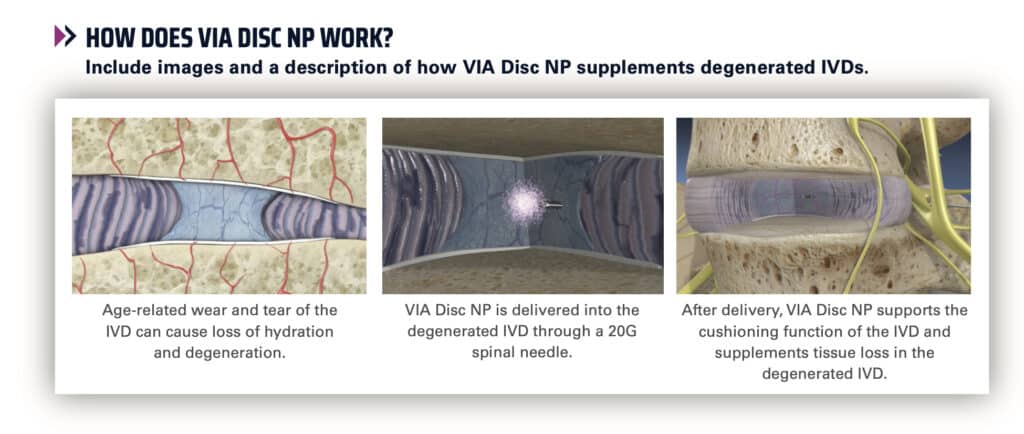Cervical Posterior Foraminotomy
Cervical spine disease and herniated discs are fairly common, but most people who suffer from them don’t seek medical attention until the symptoms become too painful to ignore. Symptoms can include neck pain and hand numbness at its mildest, but worse cases include sharp pain radiating down the shoulder and arm to the hand. You may also suffer weakness in your arm or hand.
The symptoms of cervical spine disease often are caused by pinched or compressed spinal nerves or by a herniated disc. If your symptoms become severe enough, your physician may recommend surgery.
Cervical posterior foraminotomy is a surgical solution performed to relieve the painful symptoms of compromised spinal nerves. Your board-certified spine surgeon performs this procedure through an incision in your back to make more space for the spinal nerve to pass through.
OVERVIEW
This surgery removes bone and/or portions of a herniated or diseased disc to relieve the symptoms described above. Neck pain and radiating arm pain often result when parts of a disc press against nerve roots in your spine. The procedure is described below. Ask your physician about the risks that apply to your case and what you can expect from the recovery.
 1. PREPARING FOR THE SURGERY
1. PREPARING FOR THE SURGERY
You are placed face down on the operating table. After the anesthesia has taken effect, your board-certified surgeon performs this procedure through an incision in the back of your neck to expose the bony roof of the spine. This incision leaves a minimal scar.
2. IDENTIFYING A HERNIATED DISC
The doctors at SSI use state-of-the-art diagnostic tools to identify the cause of your pain. If the cause is a herniated disc, the surgeon and their staff first confirm the location of the damaged disc. As shown in the top illustration, a disc herniation may compress the nerve root against the roof of the spinal canal. The highlighted area in the illustration represents the bone section the surgeon will remove during this procedure.
3. ACCESSING THE NERVE ROOT
The surgeon clears away bone and soft tissue to access the pinched nerve root and the herniated disc in your spinal canal. This procedure also reduces pressure on the nerve root. In a cervical posterior foraminotomy, the surgeon chisels away the bone to widen the passageway for the nerve.
4. CHECKING THE NERVE
Once the surgeon has cleared the bone away from the nerve, they will ensure that the nerve has freedom from impingement, as shown in the second illustration.
5. REMOVING THE FRAGMENT
If your surgeon finds a fragment of herniated disc beneath the nerve root, they will remove it. A successful cervical posterior foraminotomy results in an uncompressed nerve root, freeing you from pain.
6. RECOVERING FROM THE PROCEDURE
During the healing process, the nerve root returns to a normal, comfortable position. The surgeon may want you to wear a soft cervical collar for comfort. You should allow about three weeks for recovery, at which point you can return to deskwork.
SURGICAL PROCEDURES

